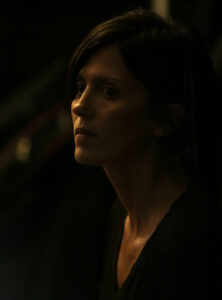Statement
La mia ricerca artistica esplora in partenza la costruzione, la definizione del sé e l’alterità nel loro delinearsi attraverso dinamiche relazionali. La riflessione intima ed esistenziale sul mio rapporto con il reale ha caratterizzato il primo decennio di produzione.
In seguito, ho iniziato a concentrarmi su opere di natura partecipata. Inizialmente indagando il linguaggio performativo, poi permettendo a queste “azioni” di convergere in progetti video strutturati.
Il mezzo filmico, unitamente alla fotografia, al disegno, la scultura e l’installazione hanno rappresentato tanto un insieme di tecniche da approfondire, quanto una pluralità “linguistica” indispensabile a declinare in modo efficace la complessità del sistema mondo.
Il mio processo artistico si nutre inoltre del dialogo tra discipline umanistiche quali la storia come dispositivo di memoria e narrazioni, l’antropologia come luogo dell’incontro, la psicoanalisi come giardino in cui germoglia la parola.
L’elemento sociale e politico è il collante che contraddistingue la ricerca, la quale, tuttavia, conserva un forte sguardo poetico.
Il mio lavoro è fortemente processuale, interagisce con i territori che attraverso, si lascia modificare dalle persone che incontro e prende forma nello spazio pubblico come centro di osservazione.
Ogni dinamica politico-sociale indagata trova infine nel corpo – corpo femminile, corpo di artista, corpo altro – un privilegiato mezzo di sintesi. Forse l’unico, universale, strumento che può comunicare, in quanto corpo umano, mediante “prove di resistenza”.
Il mio corpo scrive quindi l’opera diventando un possibile luogo di risoluzione dei conflitti.
La poesia visiva – praticata da molte artiste dagli Anni ’70 – diventa performativa.
La poesia e la performance hanno, per me, un linguaggio molto simile; lavorano su una narrazione asciutta efficace che fluisce per immagini. La performance ha un enunciato secco, lavora e de-scrive immagini chiare, esattamente come fa un certo tipo di poesia a me molto cara: la parola diventa incarnata.
My artistic research initially investigates the construction and definition of the self and otherness, understood as processes that emerge and take shape within relational dynamics. An intimate and existential reflection on my relationship with reality has characterized the first decade of my artistic production.
Subsequently, my practice progressively evolved towards participatory projects. At first through the exploration of performative languages, and later by allowing these actions to converge into structured and process-driven video works.
Moving-image, together with photography, drawing, sculpture, and installation, has constituted both a set of mediums to be technically investigated and a necessary linguistic plurality capable of articulating the complexity of the world-system.
My research methodology draws on the dialogue between different fields of the humanities: history as a device for memory and narrative construction; anthropology as a space for encounter and cultural negotiation; and psychoanalysis as a fertile ground where language takes root and grows.
The social and political dimension acts as the connective framework of my practice, while a poetic gaze remains a constant feature of my approach. My work is inherently process-based: it interacts with the territories I traverse, is shaped by the people I encounter, and takes form within public space, which becomes both context and field of observation.
The body — the female body, the artist’s body, the othered body — emerges as a privileged site of synthesis for the socio-political dynamics I investigate. It operates as perhaps the only universal tool capable of communicating, as a human body, through acts of endurance and resistance.
My body thus becomes the site where the work is inscribed, generating a possible space for the resolution — or exposure — of conflicts.
Visual poetry — historically practiced by many women artists since the 1970s — assumes in my practice a performative dimension.
For me, poetry and performance share a common language: both operate through a minimal and effective narrative structure, generating meaning through the creation of images. Performance is defined by a sharp, essential enunciation; it works with and through clear visual evocations, in the same way as a certain kind of poetry — particularly significant in my research — transforms the word into embodied presence.

